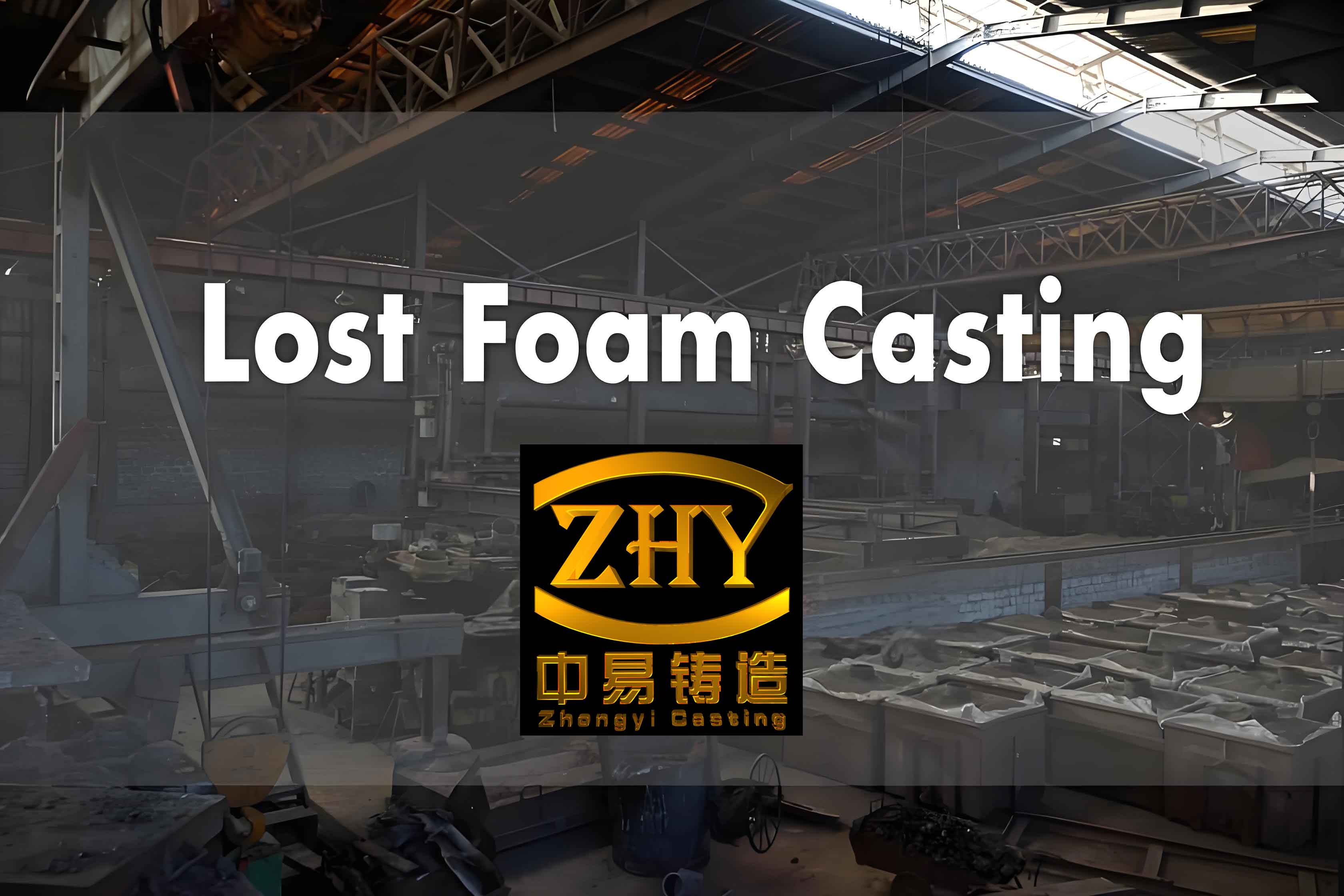Lost foam casting, an advanced manufacturing process, has emerged as a game-changer in the realm of modern manufacturing. This technique offers unparalleled precision and efficiency, revolutionizing the production of complex components and high-quality products.

Introduction
Lost foam casting, also known as evaporative pattern casting or foam pattern casting, is a unique and highly effective metal casting method. It involves the use of a foam pattern that is vaporized during the casting process, leaving behind a cavity that is filled with molten metal to create the desired component.
The significance of lost foam casting lies in its ability to produce intricate geometries with exceptional dimensional accuracy and surface finish. This makes it an ideal choice for a wide range of industries, including automotive, aerospace, and machinery.
The Process of Lost Foam Casting
The lost foam casting process can be divided into several key steps:
- Pattern Making
- The first step is to create a foam pattern of the desired component. This pattern is typically made using expanded polystyrene (EPS) or a similar foam material.
- The foam pattern is precisely machined or molded to achieve the exact shape and dimensions of the final part.
- Coating Application
- Once the foam pattern is ready, it is coated with a refractory material to provide strength and resistance during the casting process.
- The coating helps prevent the foam from melting prematurely and ensures the integrity of the casting.
- Assembly and Pouring
- The coated foam patterns are assembled into a cluster or mold, and the mold is filled with molten metal.
- The heat from the molten metal causes the foam to vaporize, creating the cavity for the metal to solidify.
- Cooling and Solidification
- After the pouring, the molten metal undergoes a cooling and solidification process.
- This results in the formation of the final cast component, which retains the precise shape and details of the foam pattern.
Advantages of Lost Foam Casting
Lost foam casting offers several significant advantages over traditional casting methods:
- High Precision
- The ability to create complex and intricate geometries with tight tolerances makes lost foam casting ideal for components that require high precision.
- This is particularly important in industries where performance and functionality depend on precise dimensions.
- Reduced Machining
- Because the cast parts are produced with close to net shape, the need for extensive post-casting machining is minimized.
- This leads to significant savings in time and cost.
- Excellent Surface Finish
- The smooth surface finish achieved through lost foam casting reduces the need for additional surface treatment processes.
- Material Flexibility
- Lost foam casting can be used with a wide range of metals, including iron, steel, aluminum, and copper alloys.
- Design Freedom
- Designers have greater freedom to create innovative and complex shapes that may not be feasible with other casting techniques.
Applications of Lost Foam Casting
The versatility of lost foam casting makes it applicable in various industries:
- Automotive
- Engine blocks, cylinder heads, and transmission components are commonly produced using lost foam casting.
- The lightweight and high-strength components contribute to improved fuel efficiency and performance.
- Aerospace
- Critical aerospace components such as turbine blades and engine parts benefit from the precision and reliability of lost foam casting.
- Machinery
- Pump housings, gearboxes, and machine tool components are manufactured using this technique for enhanced durability and performance.
Challenges and Limitations
While lost foam casting offers numerous benefits, it also faces certain challenges and limitations:
- Pattern Cost
- The production of high-quality foam patterns can be relatively expensive, especially for complex designs.
- Process Control
- Maintaining consistent process parameters, such as temperature and metal flow, is crucial to ensure the quality and reliability of the castings.
- Foam Degradation
The foam material used in the patterns may degrade over time, affecting the repeatability and accuracy of the process.
Future Trends and Developments
The field of lost foam casting is constantly evolving, with ongoing research and development efforts aimed at overcoming the existing challenges and expanding its applications:
- Advanced Materials
- The exploration of new foam materials and refractory coatings to improve the process performance and quality of castings.
- Process Automation
- The integration of automated systems for pattern making, coating application, and process monitoring to enhance productivity and consistency.
- Simulation and Modeling
- The use of advanced simulation tools to predict and optimize the casting process, reducing trial and error and improving yield.
Conclusion
Lost foam casting has emerged as a vital technology in modern manufacturing, enabling the production of complex, high-precision components with superior quality and efficiency. As the industry continues to advance, ongoing research and innovation will further unlock the potential of this remarkable casting method, driving progress in various sectors and shaping the future of manufacturing.
| Industry | Common Components Produced via Lost Foam Casting | Benefits |
|---|---|---|
| Automotive | Engine blocks, cylinder heads, transmission components | Lightweight, improved fuel efficiency |
| Aerospace | Turbine blades, engine parts | High strength, reliability |
| Machinery | Pump housings, gearboxes, machine tool components | Durability, performance enhancement |
List of Materials Suitable for Lost Foam Casting:
- Iron
- Steel
- Aluminum
- Copper alloys
List of Challenges and Mitigation Strategies in Lost Foam Casting:
- Pattern Cost – Optimization of pattern design and manufacturing processes
- Process Control – Installation of advanced monitoring and control systems
- Foam Degradation – Use of high-quality foam materials and proper storage conditions
It is evident that lost foam casting holds great promise for the future of manufacturing, and its continuous development and improvement will undoubtedly contribute to the creation of more advanced and high-quality products.
